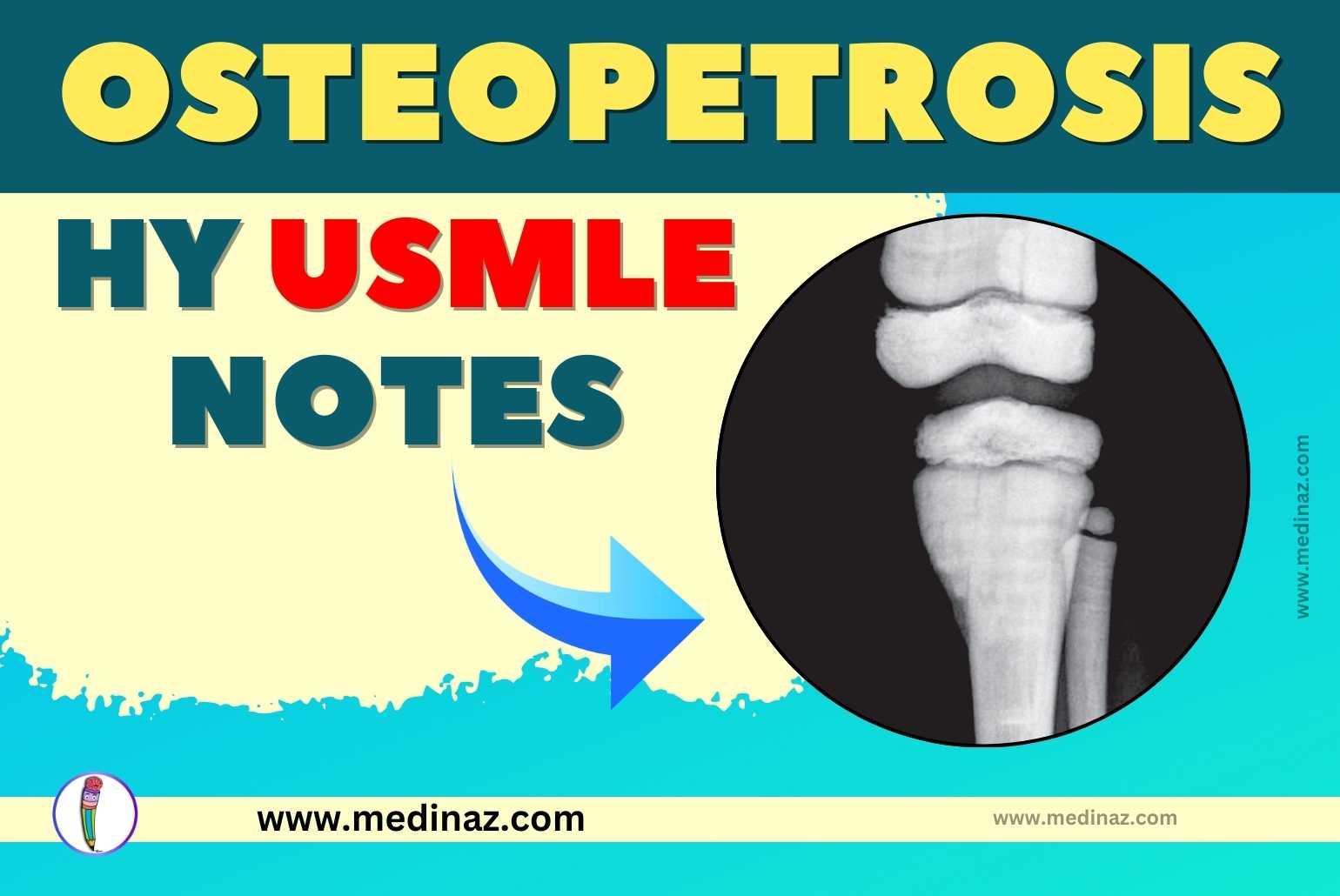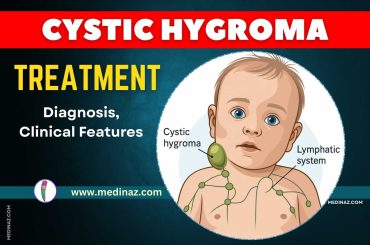Osteopetrosis USMLE Notes & Mnemonics contains all the high-yield points you need to know.
Definition:
- Osteopetrosis: A rare inherited disorder characterized by increased bone density and abnormal bone remodeling due to defective osteoclast function.
Pathophysiology:
- Defective Osteoclasts: Impaired bone resorption leads to dense but brittle bones.
- Genetic Mutations: Often mutations in genes affecting osteoclast development or function.
Types:
- Autosomal Dominant (AD) Osteopetrosis: Milder form, often diagnosed in adulthood.
- Autosomal Recessive (AR) Osteopetrosis: More severe, presents in infancy or early childhood.
Clinical Features:
- Increased Bone Density on X-Rays: “Stone bone” appearance. (Ref)
- Fractures: Despite increased density, bones are brittle.
- AR Osteopetrosis:
- Bone marrow failure (due to marrow space obliteration).
- Cranial nerve deficits (due to narrowing of foramina).
- Growth retardation, hepatosplenomegaly.
- AD Osteopetrosis:
- Often asymptomatic, may present with fractures or osteoarthritis in adulthood.
- Dental abnormalities.
Diagnosis:
- X-Rays: Characteristic dense bones.
- Genetic Testing: To confirm specific mutations.
- Blood Tests: Anemia, thrombocytopenia (especially in AR type).
Management:
- Symptomatic Treatment: For fractures, anemia, infections.
- Bone Marrow Transplant: Potentially curative for severe AR osteopetrosis.
- Interferon Gamma-1b: May increase osteoclast activity in some cases.
- Calcium and Vitamin D: To support bone health.
Prognosis:
- AR Osteopetrosis: More severe, life expectancy can be shortened without treatment.
- AD Osteopetrosis: Generally better prognosis, normal life expectancy.
Mnemonic: “OSTEOPETROSIS”
- Osteoclast dysfunction
- Stone bone (X-ray appearance)
- Thick bones but brittle
- Early onset (AR type)
- Obliteration of marrow space
- Prognosis varies (better in AD)
- Enlarged spleen/liver (hepatosplenomegaly)
- Transplant (bone marrow for severe cases)
- Recessive (AR) is severe
- Osteoarthritis (AD type)
- Symptomatic treatment
- Interferon Gamma-1b
- Support with calcium and vitamin D
Chart: Osteopetrosis Features and Management
| Feature | Autosomal Recessive (AR) Osteopetrosis | Autosomal Dominant (AD) Osteopetrosis |
|---|---|---|
| Age of Onset | Infancy/early childhood | Adulthood |
| Clinical Presentation | Bone marrow failure, cranial nerve deficits, growth retardation | Fractures, osteoarthritis, dental issues |
| X-Ray Findings | Dense “stone bone”, obliterated marrow space | Increased bone density, sclerotic bones |
| Treatment | Bone marrow transplant, interferon gamma-1b | Symptomatic treatment, calcium and vitamin D |
| Prognosis | Severe, potential early mortality | Generally good, normal life expectancy |
Note: For the USMLE, focus on recognizing the radiologic appearance of osteopetrosis, understanding the genetic basis of the disease, and distinguishing between the AR and AD forms based on clinical presentation and severity. Knowledge of the treatment modalities, especially the role of bone marrow transplant in severe cases, is also important.
Check other important USMLE Notes
A Visual Learning Platform





